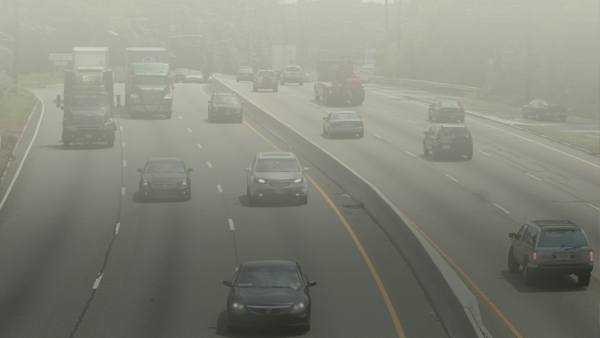A variety of special reports have been issued providing an early assessment of the impact of the COVID-19 crisis on transportation, climate change and the economy. Below are edited summaries of selected reports along with a link to an online data resource:

Temporary reduction in daily global CO2 emissions during the COVID-19 forced confinement
Nature Climate Change (journal), published May 19, 2020; updated June 11, 2020
A team of international researchers drew on government policies and activity data to estimate the decrease in CO2 emissions during forced confinements. Daily global CO emissions decreased by 17 percent by early April 2020 compared with the mean 2019 levels, just under half from changes in the surface transportation activity. An update to the study found that emissions rebounded to within 5 percent of mean 2019 levels (range 1% to 8%) in early June as countries lifted or weakened their confinement policies. The impact on total emissions for the year 2020 depends on the duration of the confinement, with a low estimate of a 4 percent decrease if pre-pandemic conditions return soon, and a high estimate of 7 percent if some restrictions remain worldwide until the end of 2020.
The researchers note that while the large decreases in emissions experienced are extreme and probably unseen before, the April numbers only brought the world back to the emissions level in 2006. The projected total annual decrease of 4-7 percent projected for 2020 is comparable to the rates of decrease needed every year over the next decades to limit climate change to a 1.5°C warming, the target set in the Paris Climate Agreement. They say these numbers put in perspective both the large growth in global emissions observed over the past 14 years and the size of the challenge we have to limit climate change in line with the Paris Agreement. It points to the need for structural changes in the economic, transport or energy systems to sustain the decreases. Still, they note, opportunities exist to set structural changes in motion by implementing economic stimuli aligned with low carbon pathways.
In particular, the researchers say their study reveals how responsive the surface transportation sector’s emissions can be to policy changes and economic shifts. Surface transport accounts for nearly half the decrease in emissions during confinement. The confinement prompted increased active travel (walking and cycling, including e-bikes). Cities like Bogota, New York, Paris and Berlin are rededicating street space for pedestrians and cyclists. Making these types of policies permanent would have minimal or positive impact on societal well-being. However, at the same time there are calls by some governments and industry to delay Green New Deal programs and to weaken vehicle emission standards as part of economic recovery. They say the extent to which world leaders consider the net-zero emissions targets and the imperatives of climate change when planning their economic responses to COVID-19 is likely to influence the pathway of CO2 emissions for decades to come.
The full article is at doi.org/10.1038/s41558-020-0797-x The June update to the article is at: https://www.icos-cp.eu/gcp-covid19 Lead Researchers: Corinne Le Quéré, University of East Anglia, Norwich, UK; and Robert B. Jackson, Stanford University
How the coronavirus pandemic slashed carbon emissions—in five graphs
Nature (magazine), May 20, 2020
This article uses graphs to summarize the findings of the study summarized above from the journal Nature Climate Change and one other study that is still pending publication. The second study, developed by Laboratory of Climate and Environmental Sciences in Gif-sur-Yvette, France, analyzed energy data from more than 400 cities and 130 countries as well as weather data across the globe to produce daily estimates of carbon emissions for 2019 and 2020. According to their preliminary estimates, global emissions started to significantly diverge from last year’s in March, as countries around the world began shutting down businesses and enforcing social-distancing measures.
Commercial and industrial demand for electricity dropped off as businesses closed down, and people all over the world parked their cars and stayed at home. “That’s one of the things that stands out: people still drove during the 2008 economic recession, but they are not driving now,” says collaborator Steven Davis, an earth-system scientist at the University of California Irvine.
The article is available at www.nature.com/articles/d41586-020-01497-0 Author: Jeff Tollefson

Impact of COVID19 Mitigation on Traffic, Fuel Use and Climate Change
University of California-Davis Special Report 3, April 30, 2020
Using traffic data from California and elsewhere in the US, the researchers found that total vehicle miles traveled (VMT) at the county and state level had declined by 61 percent to 90 percent following the various government stay-at-home orders. Although traffic crash data are not available for these counties, media reports and analyses of California conditions suggest that these reductions in total travel could be accompanied by nationwide declines in crash impacts.
The researchers used VMT data to calculate that emissions of US greenhouse gas (GHG) emissions that cause climate change were reduced by 4 percent in total and by 13 percent from transportation in the almost 8 weeks since many stay-at-home orders went into effect. This puts the US on track to meet its annual goals for GHG reduction under the Paris Climate Accord. California has a target of 80 percent reduction in GHG from 1990 levels by 2050. If traffic remained reduced for one year, the reduction in VMT would allow California to meet half of its 2050 climate change target. The reduction in VMT per state was correlated with the number of COVID-19 cases and number of deaths (per 100,000 population), meaning that the more COVID-19 cases and deaths a state had, the greater its reduction in traffic.
California relies on a gasoline tax supplement of 17.6 cents/gallon to supplement other sources of transportation funds, with a total sales tax on gasoline of ~61 cents/gallon. The reduction in travel has resulted in an estimated $46 million/week reduction in SB1 fuel tax funds and ~$161 million/week in total fuel tax revenues for California state and local transportation projects.
The full report is available at roadecology.ucdavis.edu/files/content/projects/COVID_CHIPs_Impacts_updated_430.pdf Researcher: Fraser Shilling, Road Ecology Center, UC Davis.
Coronavirus Economic Shocks: New Jersey Versus the Nation
Rutgers University, New Jersey, June 3, 2020
New Jersey lost more than twice the number of jobs it created over the past decade in just the first two months of the global coronavirus pandemic—bringing the state’s employment numbers down to where they were in 1985. According to the report, New Jersey gained 406,000 jobs during the record-long 2010-2020 employment expansion but lost more than double that number—833,000 jobs—in March and April.
The study indicates that the brunt of the national and state employment collapse reached full force in April 2020. In that 30-day period, the nation shed 20.5 million total payroll jobs, a scale of decline that is without precedent. New York and New Jersey, the two states hardest hit by the coronavirus, have lost one-fifth of their total employment in the last two months, according to the report.
Researchers say that the sheer scale of the loss of jobs due to this public health crisis reveals the need for continued major federal monetary, fiscal and other policy actions to restore public health and economic viability to the nation and to New Jersey.
The full report is available at rucore.libraries.rutgers.edu/rutgers-lib/63658/PDF/1/play/. Researchers: James W. Hughes, Connie O. Hughes, and Joseph J. Seneca, Rutgers University.
Covid-19 Impact Analysis Platform
University of Maryland
The COVID-19 Impact Analysis Platform at data.covid.umd.edu/ provides data and insight on COVID-19’s impact on mobility, health, economy, and society for all states and counties with daily data updates. Developed by a multidisciplinary team of researchers, the online data tool provides data and research findings to help inform the general public and support decision making. Metrics are produced based on validated computational algorithms and privacy-protected data from mobile devices, government agencies, healthcare system, and other sources. The platform will evolve and expand over time as new metrics are computed and additional visualizations and decision support tools are developed.